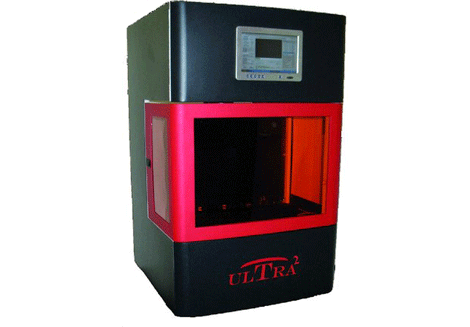
The Envisiontec Ultra caught our eye
In my first blog I promised to report today on 3D printing and storage, but I realised that, with a couple of exceptions, there is nothing particularly new that has came out of Siggraph in these areas.
So, after a short report, take a ride with me to virtual Hollywood – it might have more relevance than meets the eye.
As expected, the output of 3D printers at Siggraph leaned toward toys, human heads and various alien life forms. Exhibitors included established vendors such as 3DSystems, ZCorporation and Objet. One vendor offering something a bit different was Germany’s EnvisionTEC.
Instead of building objects in layers the company’s Ultra system uses patented technology to produce very smooth surfaces based on what it calls “pixel shift” and “pixel tuning.”
Tera to peta storage
The new storage product came from BlackSky Computing. The company’s Apollo system can store 180 TB of data in a 4U chassis, and the system can be expanded to support a single file system of more than two petabytes, according to the company.
Behind the glitter
As usual, one of the most arresting parts of the Siggraph experience was the annual media luncheon sponsored by Jon Peddie Research.
The subject this year was virtual moviemaking. Jon Peddie moderated the session with panelists that included Brian Pohl, principal user experience designer for Autodesk; Ping Fu, CEO of Geomagic; Darin Grant, head of production technology at DreamWorks; Steve Cooper, product manager for Poser character animation software; and Rob Powers, vice president of 3D development for NewTek, maker of Lightwave software used in movies such as Avatar.
Interactive immersion
Greater interactivity of 3D tools is leading to a new era of collaboration in moviemaking, according to Powers. During the filming of Avatar, for example, actors were able to interact in real time with 3D environments displayed on large screens surrounding the set while director James Cameron captured their performances on camera.
Unlike static post-production, this enabled an immediate exchange among director, actors, cinematographer and production people on the set.
The equivalent of this in the design world is the increasingly affordable immersive environments where teams of designers and engineers can collaborate in real time to assess design aesthetics or analyse CFD simulation results.
Seeing the unseen
Ping Fu defined virtual moviemaking as the ability to reveal things that the eye cannot see, such as microscopic or atomic particles, or objects moving so fast that they would be a blur to our normal eyesight.
By this definition, advances in virtual moviemaking will continue to translate to design and engineering disciplines. The more we can use graphics power to show the unseen – the path of smoke through a building in the event of a fire, the hidden workings of a fuel pump, the aerodynamics of an airplane breaking the sound barrier – the greater the level of collaboration and insight we will have earlier in the design process.
So, while it is the fantasy of Hollywood that fuels our imagination, the graphics technologies behind these exciting images can also have important implications for those designing new generations of products for Planet Earth.
Bob Cramblitt reports on CAD/CAM/CAE technologies that impact product development. He’s been attending and reporting on Siggraph since 1983.






